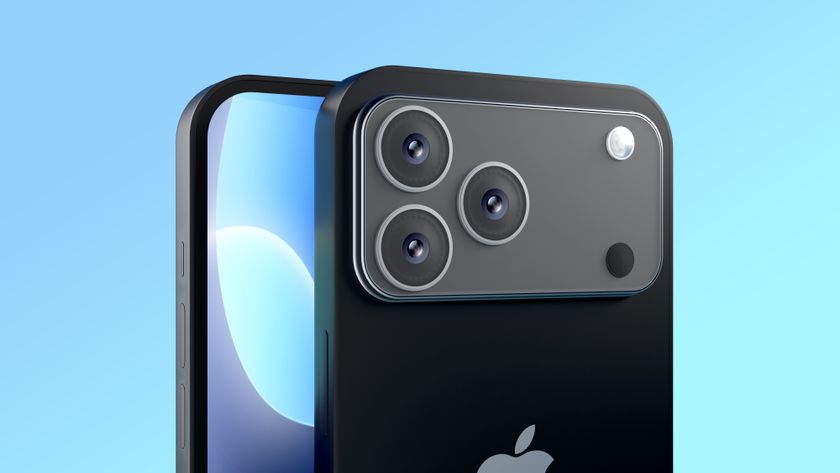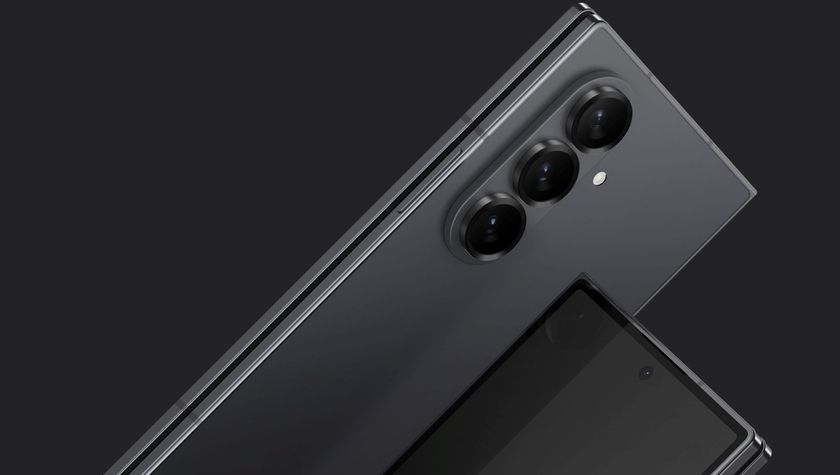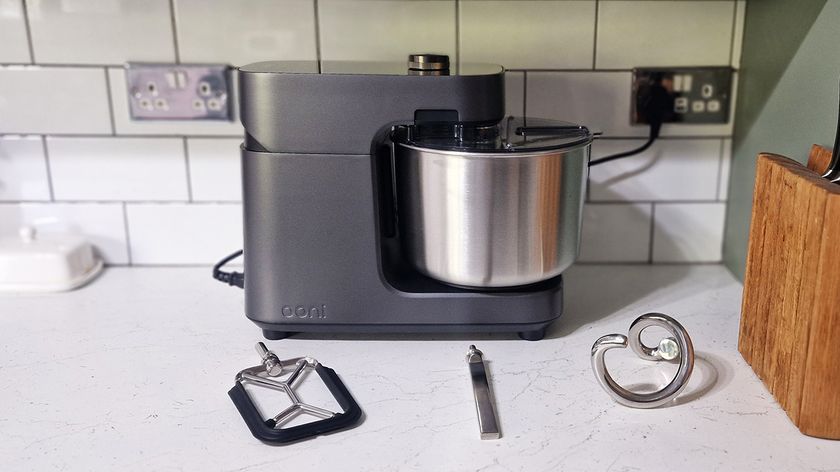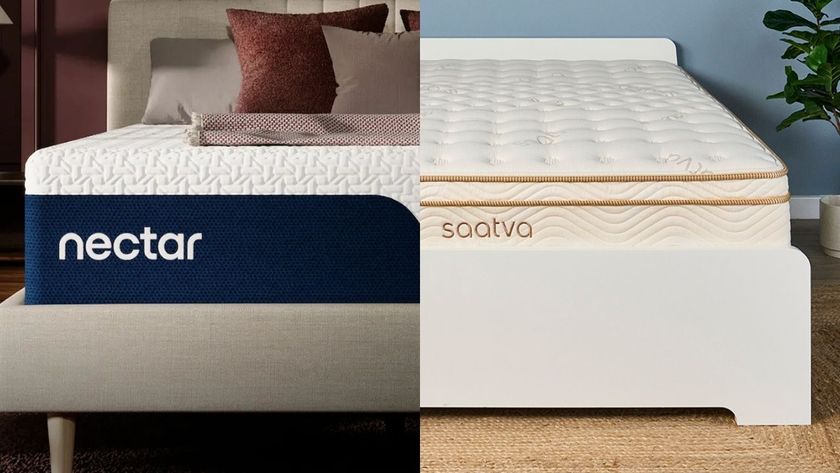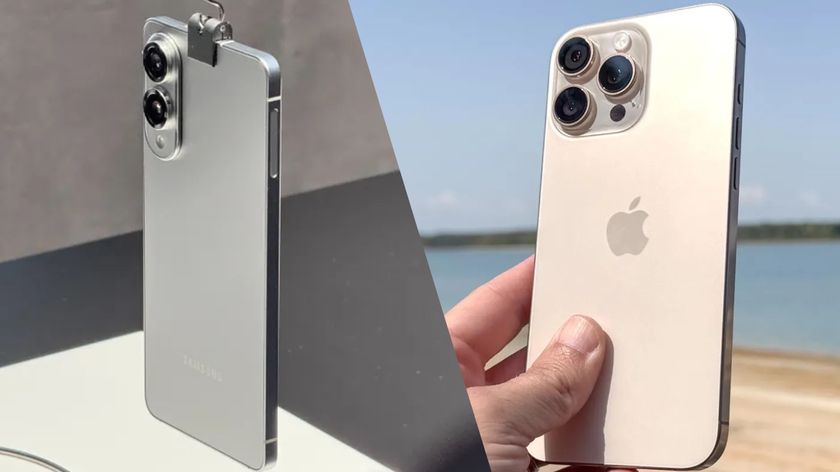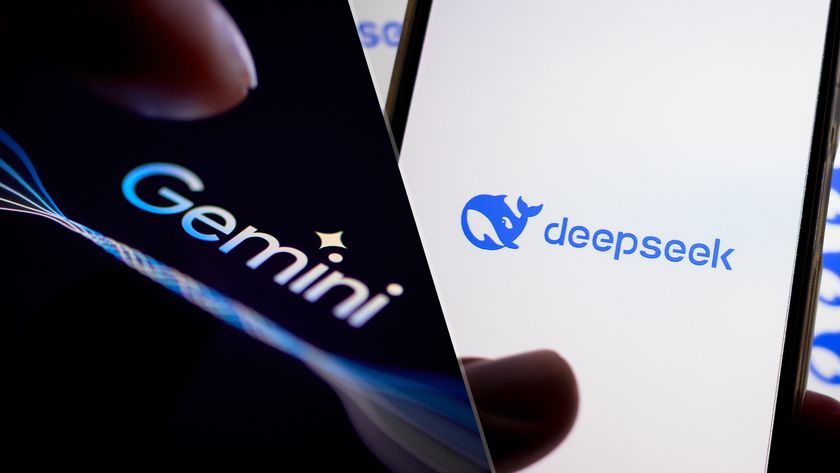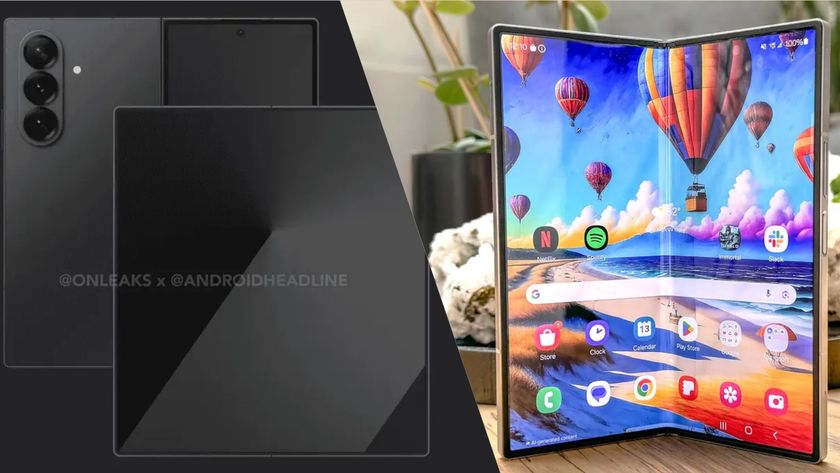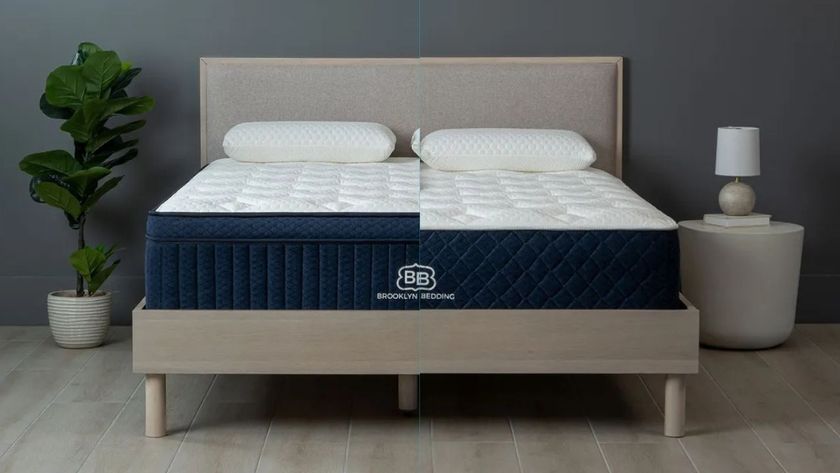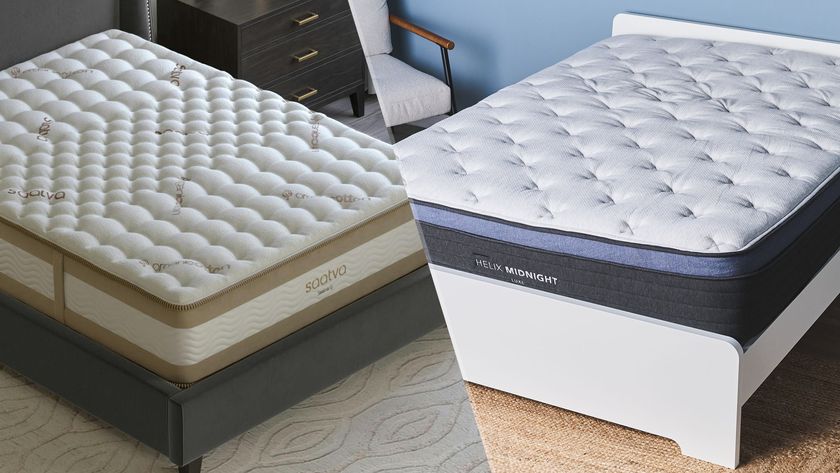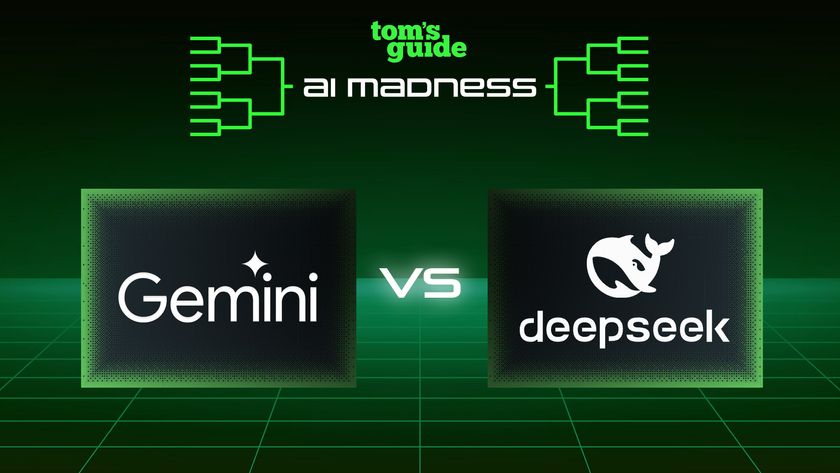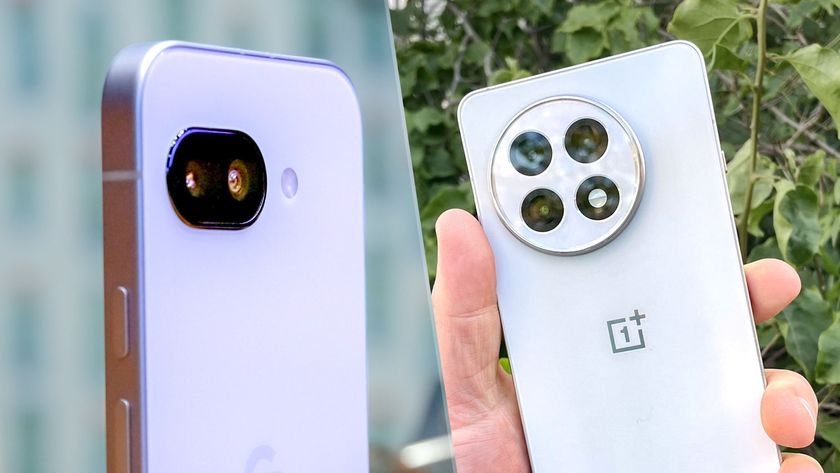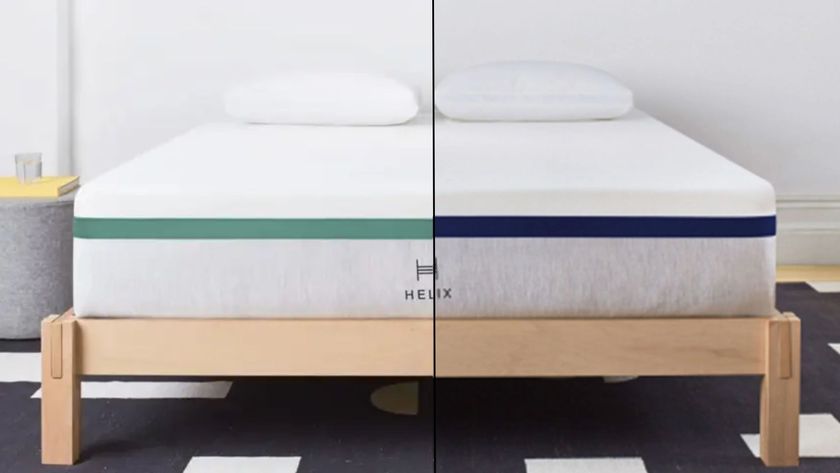The Best PDAs of 2002
High performance and multimedia are on the move - the future belongs to PDAs. THG's Munich lab gave the latest batch of handhelds a good once-over.
The New Generation - Multitalented PDAs
The article first appeared in Tom’s Hard News Email Newsletter
A mere six points stood between the cream of this crop, the Compaq Ipaq H3870, and the poorest scorer, the Toshiba Pocket PC E570. But even as the laggard in this pack, the Toshiba E570 still earns an overall rating of "good". There’s no other product group where performance scores are clustered as close together as in this one. The reason is simple - the hardware for each Pocket PC complies with Microsoft’s recommendations for Pocket PC 2002. This operating system is installed in all the devices we tested, which explains why they all come furnished with a 206 MHz Intel StrongARM processor and 32 MB Flash ROM. The essential differences between the Pocket PCs we tested are limited to the expansion options they offer and their ease of use. In these two areas, nothing tops the Ipaq H3870. This Compaq handheld boasts an outstanding display, while its integrated speakers produce crisp sound. Even Bluetooth comes standard with the device. Tom’s Hardware carried out this test in cooperation with the Munich lab of the acclaimed German magazine "PC Professionell".
New Operating System Only With New Purchases
First the bad news - if you’ve got an older Pocket PC running Windows CE 3.0, you won’t be able to revel in the delights of Microsoft’s new operating system, Pocket PC 2002 - not even if your device conforms to the hardware requirements for Pocket PC 2002. The operating system requires you to have an Intel StrongARM CPU with a clock speed of 206 MHz as a bare minimum. Up till now, though, only Compaq produced CPUs that were this fast. And the manufacturer only started offering an OS update a short time ago.
PDA With Windows GUI - Video & Sound
One of Pocket PC 2002’s main improvements is its enhanced multimedia support for video and sound. Also, Microsoft has made some important tweaks to the OS. The GUI is more or less the same as the one used in Windows XP ; like its desktop counterpart, it can be adapted to the user’s need. For the first time, Internet Explorer is able to display web and WAP content. E-mail handling capabilities have also been improved. Now that Pocket PC 2002 has been launched, users have access to Outlook subfolders on their PC or notebook.
Pocket PC 2002 goes more than just a step beyond its predecessor in the area of communications - because it uses the Obex standard, this OS even enables users to easily exchange data with Palm OS devices via the infrared port. This is a good way to exchange virtual business cards, for example. Also, Pocket PC 2000 is the first Windows operating system that supports Bluetooth for short-range communications. Unfortunately, Microsoft failed to eliminate one specific disadvantage of its mobile operating system - in Windows CE, you cannot shut down applications merely by closing the window ; awkwardly enough, Pocket PC suffers from the same design flaw as its predecessor. So, instead of closing the program, you only minimize the application and it continues to run in the background. If you really want to close the program, you have to go to the Settings/Control Panel under the menu item Memory and click on Programs Executed to turn off the program and free up the memory that it was using. Compaq and Hewlett Packard make life a lot easier for the user - both manufacturers provide easy-to-use programs for controlling running tasks as standard tools in their retail Pocket PC packages.
Palm OS - Innovation Slowdown
The Palm OS camp can no longer keep up with the innovative drive of Pocket PC manufacturers. In fact, the only manufacturers that have launched attractive products for a while are Handspring and Sony. Handspring remains faithful to the original design of Palm PDAs : the main advantages that Palm OS devices offer over the Pocket PC competitors are their ease of use, monochrome displays and long-lasting batteries. As a Palm PDA, the Handspring Visor Pro has 16 MB RAM. The approach that Sony follows with the Clié PEG-N770C is entirely different. With its high-resolution color display and an MP3 player, the Clié is a mobile multimedia console. Since Pocket PCs and Palm PDAs are based on fundamentally different designs, the results of the Palms have not been included in the overall evaluation.
Only Drawback - Hefty Price Tag
It’s hard to go wrong with any of these PDAs. If you’re not dead set on Bluetooth functionality, you should choose your model based on the price. For example, Toshiba offers a Pocket PC that is expandable with CF and SD cards for the relatively low price of $569. Even further down the price scale, the HP Jornada 565 retails for only $549.
Recommendations
Compaq iPAQ H3870
Our recommendation goes to the Compaq Ipaq H3870. What makes this Pocket PC particularly special are its excellent ergonomic features and the fact that it is the only Pocket PC to come equipped with Bluetooth technology.
Hewlett Packard Jornada 565
The Jornada 565 from Hewlett-Packard gets good to very good scores in terms of performance, features and ergonomic design. Even more attractive is the price of this Pocket PC - the lowest of the group. Because of this, THG awards the Jornada 565 its "Value Recommendation".
Testing Procedure And Evaluation
The eight handheld computers went through seven benchmark tests. Six of these are based on Pocket PC 2002. The two PDAs manufactured by Handspring and Sony are based on Palm OS, which are listed in a separate evaluation. All the devices were rated on the basis of their performance, features, ergonomic design and customer service. The performance rating is based on the benchmark scores. What’s important in this evaluation is not only the CPU and graphics performance but also the results obtained in the practical tests. This includes the time required to synchronize 1600 addresses, as well as the duration of a search performed in the handheld’s master database. In addition, the German magazine "PC Professionell" ran test programs to check how well the integer and floating point units of the processors perform. Yet another test category involved the 3D performance of the Pocket PCs. Finally, the laboratory experts measured battery life.
Performance Not The Only Important Factor
The features rating was based on the size of the standard RAM, the maximum allowable memory expansion, the number of colors and resolution of the display, the power supply design and the type of microphone and speaker that came with the PDA. Also important here were the available ports and card slots. Furthermore, we took into consideration the software bundled with the PDA, where offline browsers and imaging tools are particularly important.
The third discipline in the PDA comparison evaluates ergonomic design. The first factors considered were the weight and dimensions of the device. In both cases, lower scores mean better ease-of-use. Another essential factor in ergonomics is the quality of the display. Here, we rated not only the physical data such as size, resolution and number of colors or grayscales, but our testers also gave scores based on their subjective impressions. This included categories such as contrast, focus, the intensity of background illumination, legibility indoors as well as outdoors and the quality of the anti-reflection coating used. The energy management design was another component of the ergonomic design rating.
Points were also given for power packs, the capability of loading the PDA without a docking cradle and additional batteries to secure data in case the main battery runs out.
Benchmark Tests In Detail
Overall Rating - Best Of Test - Compaq iPAQ H3870
Performance - CPU And Graphics Performance
Features : Memory/ROM, Expansions
Ergonomic Design - Contrast TFT, Battery Life, Ease Of Use
CPU Performance
Graphics Performance
Synchronization
Address Search
Luminance
Battery Life
Test Results Details
Because pocket PCs are furnished with almost identical hardware components, the results are relatively uniform. There are slight differences in the quality of the displays, audio characteristics and the GUI.
All the Pocket PCs from the 2002 generation are based on the 206 MHz processor Intel StrongARM SA1110, which explains why the PDAs got very similar performance scores. For instance, results from the floating unit test are identical up to the second decimal place. Synchronizing 1600 addresses took anywhere between 33.8 (Casio) and 37.1 seconds (Toshiba). The difference in battery life was also minimal - the top dog in this discipline was Hewlett-Packard, with 10:35 hours. The Casio Cassiopeia had the shortest battery life, with 8:55 hours.
Unlike the last crop of models, this group of Windows handhelds uses only reflective TFT color displays with 65,536 colors. Because this type of monitor uses ambient light, the display in brightly lit rooms is better than on conventional TFT monitors. Compaq provides the highest degree of luminosity and the largest display surface, giving it an edge over the other PDAs in the display rating.
CASIO Cassiopeia E-200 - Minor Shortcomings
"Use up to three expansion slots at the same time" - this is the claim that Casio makes in order to promote the Cassiopeia E-200. Casio integrates two expansion slots as standards, the CompactFlash and Secure Digital Card slots. The CF slot accepts Type II cards, too. You can also use a PC card interface with an additional jacket. Jackets are expansion modules that are plugged into the handheld. Weighing in at 190 grams, this is the heaviest of all the PDAs tested and comes equipped with 64 MB RAM and 32 MB ROM, which is about average for this class. The software package contains not only standards such as USB Cradle and Pocket PC software, but also a CD with detailed instructions and useful tools, including programs for storing data on SD and CF cards, a special media player, some games and much more. A leather case and a "quick start" booklet are also part of the package.
Casio took some peculiar liberties in selecting the TFT display. Even its good luminosity (75.6 candelas per square meter) can’t make up for its mediocre contrast. Another problem is the brightness, for which there are only five basic settings. This means that it is close to impossible to find the optimal settings in different environments. To make matters worse, a highly reflective surface frames the display, dispersing light in all directions when used in brightly lit environments and making the display even less readable. Another feature of the Casio TFT that leaves much to be desired is its touch screen interaction. Instead of gliding smoothly over it, the stylus makes scratching sounds on the display surface. And if you want to make any precise entries in the corners of the display, you’ll have to press down very firmly.
The Casio Cassiopeia E-200 carries a price tag of $599.99. However, this is a bit too expensive, considering its ho-hum array of features and ergonomic design.
COMPAQ iPAQ H3850/3870 - Test Winner With Bluetooth
For $649, Compaq’s Ipaq H3870 is the only handheld that comes equipped with Bluetooth technology as a standard feature. All other handhelds require that you purchase additional cards in order to be able to use this technology. This involves shelling out an additional $100 and taking up yet another card slot . With the notable exception of the Bluetooth interface and the price, the Ipaq H3870 has features identical to those offered by the H3850. The Ipaq H3850 retails for about $599, putting it in the mid-range. Compaq equips both models with 64 MB RAM and 32 MB Flash ROM. 24 MB are taken up by the operating system Pocket PC 2002, while the remaining 8 MB of ROM are free for you to use for storing data. The program Permanent PIM allows you to select important data to be stored in non-volatile Flash ROM, where your data remains safe even if your battery is completely drained. Compaq sets itself apart from its competition with two particular features - IBM Via-Voice permits you to control important functions with voice input, while the tool I-Task allows you to manage running applications (you can close all active programs, for example). Compaq’s Pocket PCs can be expanded using the SD card slot at the top of the case. If you need to store information on CompactFlash or even PCMCIA cards, the jacket design enables you to use these memory card formats as well.
Our laboratory testers were particularly impressed by this PDA’s high-contrast display, which had the highest luminosity scores of all - 93.1 candelas per square meter. Also, there are 30 different brightness levels to choose from. Another factor that improves legibility is the size of the display - 57 x 77 mm, which is the largest in the test group. But Compaq doesn’t get top honors only in the area of display quality - its competitors can’t hold a candle to the Ipaqs in terms of sound quality, either. Their speakers produce the clearest and most powerful sound.
HEWLETT PACKARD Jornada 565/568 - Good Ergonomics
Jornada users have had to make do with the slowest processors of all the Pocket PCs until now. The CPU used in the now rather obsolete Jornada 525 and 548 is manufactured by Hitachi and pokes along at 133 MHz. Hewlett-Packard has now made up for this shortcoming in the Jornada 565 and 568. The only difference between these two Pocket PCs is the amount of RAM that they have. The 565 has 32 MB RAM, while the 568 has 64 MB. There is also a price difference of about $50. The two Jornadas are the lightest models in the test, weighing in at only 173 g. The 565 costs $549, while the 568 retails for $599.
Hewlett-Packard has added a slot for Type I CF cards, which is fitted with a removable cover so that you can also use wider CF cards (Extended Type 1). The ergonomic design of the Jornadas is acceptable. One of its main weaknesses is its low display luminosity - in this discipline, Hewlett-Packard barely produces 52.4 candelas per square meter. Yet another problem is the stylus, which is affixed so loosely to the Jornada’s case that tipping the PDA ever so slightly to one side will cause the stylus to fall out. Despite this defect, the manufacturer does not supply a replacement stylus. The positive aspects of the Jornada more than make up for these weaknesses, though.
Hewlett-Packard is the only manufacturer that enables you to freely adjust the brightness of the displays. What’s more, the contrast is above average. The integrated speakers produce a clear, albeit quiet sound. Hewlett-Packard is also the only manufacturer to furnish its Pocket PCs with an integrated display cover. The Jornadas come with a comprehensive software package that is not limited to just the standard programs for Pocket PCs. Buyers will also find applications that have been developed by Hewlett-Packard itself, such as the Jornada Task Switcher and Home Menu, which facilitate navigation. The retail package contains image viewers and other useful tools, too.
TOSHIBA Pocket PC E570 - Reasonably Priced
With its no-frills, classic design, the Pocket PC E-570 is the most compact of all of the devices tested (77.5 x 125.0 x 17.5 mm). The competitors of the E-570 are up to eight millimeters longer (Compaq Ipaq). Despite its miniscule proportions, this Pocket PC still offers both, SD and CompactFlash, slots. By now, there are all sorts of expansions available, particularly in the CF format. In addition to memory cards and modems, you can choose between wireless LAN modules, Bluetooth cards and many other possibilities. Even more appealing is the fact that the E-570 enables you to use two different expansion components simultaneously, without having to go to the trouble of switching modules. However, since Toshiba has positioned both of the expansion slots on the upper edge of the case, the infrared port had to be pushed over to the left side of the case. This is a real plus when accessing the Internet via a mobile phone, because you can place it right next to the handheld, making it possible to read both displays. The downside, though, is that it is more difficult for two Pocket PCs to communicate with one another. In fact, two-person infrared games are next to impossible.
Except for the inclusion of two expansion slots, Toshiba does not differ from the competition that much in terms of its hardware. The PDA comes with a USB docking cradle and a leather case. Just like all the other manufacturers, Toshiba has opted not to include headphones. For what it delivers, the asking price for the E570 is relatively low at $569.
The quality of the display is satisfactory. Scores for both maximum brightness (61.8 candelas per square meter) and the contrast ratio are smack dab in the middle of the test group. Also, there are only five different brightness levels from which you can choose.
Palm OS PDAs - The Latest
Ever since it launched its m500 series, Palm has pretty much stayed out of the limelight. There was some hubbub about two of its products at CeBIT 2002 - first, the Palm m515, which will take over where the m505 left off. This newer model offers several improvements compared to its predecessor, particularly in terms of the quality of its display. In addition, the m515 comes standard with 16 MB RAM. The m130 has been designed for newcomers to the PDA scene. Two new PDAs from Handspring and Sony are already available on the market. Both manufacturers have produced models with extraordinary features that have helped them to stand out from the rest of the Palm crowd.
Handspring - No Experiments, Please
No other Palm OS PDA is supplied with a standard of 16 MB RAM. Thanks to its Springboard design, the very conservatively designed Handspring Visor Pro offers flexible expandability. There are a large number of modules for the Handspring-specific expansion slot, ranging from Bluetooth communication modules to telephone and GPS modules. Unlike Sony, Handspring has settled with a grayscale display with background illumination for its Visor Pro. Since the display requires less power, Handspring boasts a considerably longer battery life than Sony - over 65 hours. The Clié’s color display is a much larger drain on the power supply, restricting its battery life to 13 hours.
Sony - Lifestyle With Limitations
Sony’s Clié PEG-N770C opens up a world of multimedia applications that had previously been closed to Palm users. A particular novelty on this Palm handheld is its MP3 player functionality. To make up for the fact that the integrated Motorola DragonBar processor isn’t powerful enough to decode MP3 files, Sony has integrated the necessary electronics in a small add-on module that also serves as a remote control for the MP3 player. Sony also includes stereo headphones and a software audio player. The storage medium that Sony relies on is one of its own products - the Memory Stick, which offers up to 128 MB memory to supplement the 8 MB RAM on the handheld.
This is sufficient for at least two hours of music in either the MP3 or the Atrac-3 format at a standard sampling rate of 44100 Hz. But that’s not the only unique thing about the Clié. Sony has broken new ground with its display. The reflective screen displays 65,536 colors and has a maximum resolution of 320 x 320 pixels. Until the Sony model came out, the standard for Palm devices was 160 x 160 pixels. With such a high resolution, images are very crisp - even pictures can be displayed in good quality on this PDA. However, expansions such as wireless LAN or Bluetooth are not available in the Memory Stick format - Clié users are going to have to live without such interesting features for the time being.
Details Of The Palm OS PDA Benchmark Tests
CPU Performance
Graphics Performance
Synchronization
Address Search
Battery Life
Conclusion: Best Of The Pack - 2002 Generation Of PDAs
If you’re primarily in the market for a long-winded organizer with a lot of memory and a flexible expansion design, the Handspring Visor Pro is the perfect pick for you. It performs all the basic functions like managing addresses and making appointments. It’s also reasonably priced at $229. Sony’s Clié PEG-N770C is mainly geared toward users who expect more from a handheld than just the standard organizer functions. With its bright display and integrated MP3 player, the Clié is a real multimedia machine. The PDA even displays high resolution images. Without exception, these PDAs offer a much more comprehensive range of features than any of the Palm OS PDAs.
RATINGS & FEATURES Pocket PCs
| Manufacturer | Casio | Compaq | Compaq | Hewlett Packard |
|---|---|---|---|---|
| Product | Cassiopeia E-200 | Ipaq H3850 | Ipaq H3870 | Jornada 565 |
| Overall Rating (in points) | Good, 85.6 | Good, 89.3 | Very good, 91.3 | Good, 87.1 |
| Performance (30%, in points) | 83.1 | 84.5 | 84.5 | 87.3 |
| Features (30%, in points) | 88.2 | 91.9 | 98.6 | 85.7 |
| Ergonomics (30%, in points) | 86 | 96.5 | 96.5 | 91.2 |
| Internet | www.casio.com | www.compaq.com | www.compaq.com | www.hp.com |
| Price | $599.99 | $599 | $649 | $549 |
| Technical Specs | ||||
| OS | Pocket PC 2002 | Pocket PC 2002 | Pocket PC 2002 | Pocket PC 2002 |
| Revision | 3.0.11171 | 3.0.11171 | 3.0.11171 | 3.0.11171 |
| Processor / Clock | Intel Strongarm / 206 MHz | Intel Strongarm / 206 MHz | Intel Strongarm / 206 MHz | Intel Strongarm / 206 MHz |
| RAM / ROM | 64 MB / 32 MB | 64 MB / 32 MB | 64 MB /32 MB | 32 MB / 32 MB |
| Flash-ROM | yes | yes | yes | yes |
| Dimensions & Weight | ||||
| Dimensions (B x H x T) | 82 x 130 x 17 mm | 80 x 133 x 16 mm | 80 x 133 x 16 mm | 77 x 132 x 17 mm |
| Weight | 190 g | 180 g | 180 g | 173 g |
| Display | ||||
| Colors / Grayscale | 65,536 colors | 65,536 colors | 65,536 colors | 65,536 colors |
| Viewable Screen (W x H) | 53 x 71 mm | 57 x 77 mm | 57 x 77 mm | 53 x 71 mm |
| Resolution | 240 x 320 pixels | 240 x 320 pixels | 240 x 320 pixels | 240 x 320 pixels |
| Backlight / Frontlight | no / yes | no / yes | no / yes | no / yes |
| Hardware | ||||
| Jog Dial | yes | no | no | no |
| Microphone / Loudspeaker | yes / yes | yes / yes | yes / yes | yes / yes |
| Power Source / Capacity | Li-ion Rechargeable Battery / 950 mAh | Li-Polymer Rechargeable Battery / 1400 mAh | Li-Polymer Rechargeable Battery / 1400 mAh | Li-Polymer Rechargeable Battery / 1230 mAh |
| Additional Battery | yes | no | no | yes |
| Interfaces | ||||
| PC Card | optional | optional | optional | optional, via PC card adapter |
| CompactFlash, Type | yes, Type I or II | optional | optional | yes, Type I |
| SD, MMC Card | yes | yes | yes | no |
| Memory Stick | no | no | no | no |
| USB / Serial | yes / no | yes / yes | yes / yes | yes / optional |
| Irda / Bluetooth | yes / no | yes / no | yes / yes | yes / no |
| Audio I/O | yes / no | yes / no | yes / no | yes / no |
| Included in Package | ||||
| Bundled Software | Active-Sky, Active Sync 3.5, Backup, MS Reader 2.0, MS Media Player 8.0, MSN Messenger, Pocket PC Software 2002, Pocket Office, Games, Voice Recorder | Active Sync 3.5, MS Reader 2.0, Dashboard, IBM Via-Voice, I-Task, MS Media, Player 8.0, MSN Messenger, Pocket PC Software 2002, Pocket Office, Voice Recorder | Active Sync 3.5, MS Reader 2.0, Dashboard, IBM Via-Voice, I-Task, MS Media Player 8.0, MSN Messenger, Pocket PC Software 2002, Pocket Office, Voice Recorder | Active Sync 3.5, Jornada Backup/Home Menu/Imager/Task-Switcher, MS Reader 2.0, MS Media Player 8.0, MSN Messenger, Pocket PC Software 2002, Pocket Office, Voice Recorder |
| Accessories included | Docking cradle, leather case | Docking cradle, replacement stylus, leather case, softcase | Docking cradle, replacement stylus, leather case, softcase | Display cover, docking cradle, backup battery, stylus |
| Docking Cradle : USB / Serial | yes / no | yes / yes | yes / yes | yes / no |
| Stereo Headphones | no | no | no | no |
| Printed Manual | no | no | no | yes |
| Quick Start Guide | no | yes | yes | yes |
RATINGS & FEATURES Pocket PCs, Continued
| Manufacturer | Hewlett Packard | Toshiba | Handspring | Sony |
|---|---|---|---|---|
| Product | Jornada 568 | Pocket PC E570 | Visor Pro | Clié PEG-N770C |
| Overall Rating (in points) | Very good, 90.3 | Good, 85.1 | n.a. | n.a. |
| Performance (30%, in points) | 87.3 | 84.7 | n.a. | n.a. |
| Features (30%, in points) | 96.3 | 83.1 | n.a. | n.a. |
| Ergonomics (30%, in points) | 91.2 | 88.6 | n.a. | n.a. |
| Internet | www.hp.com | www.toshiba.com | www.handspring.com | www.sony.com |
| Price | $599 | $569 | $229 | n.a. |
| Technical Specs | ||||
| OS | Pocket PC 2002 | Pocket PC 2002 | Palm OS | Palm OS |
| Revision | 3.0.11171 | 3.0.11171 | 3.5.2 | 4.1 |
| Processor / Clock | Intel Strongarm / 206 MHz | Intel Strongarm / 206 MHz | Motorola Dragonball / 33 MHz | Motorola Dragonball / 33 MHz |
| RAM / ROM | 64 MB / 32 MB | 64 MB / 32 MB | 16 MB / n.a. | 8 MB / 4 MB |
| Flash-ROM | yes | yes | yes | yes |
| Dimensions & Weight | ||||
| Dimensions (B x H x T) | 77 x 132 x 17 mm | 78 x 125 x 18 mm | 77 x 121 x 18 mm | 71 x 119 x 17 mm |
| Weight | 173 g | 180 g | 154 g | 160 g |
| Display | ||||
| Colors / Grayscale | 65,536 colors | 65,536 colors | 16 bit grayscale | 65,536 colors |
| Viewable Screen (W x H) | 53 x 71 mm | 53 x 71 mm | 61 x 57 mm | 54 x 54 mm |
| Resolution | 240 x 320 pixels | 240 x 320 pixels | 160 x 160 pixels | 320 x 320 pixels |
| Backlight / Frontlight | no / yes | no / yes | no / yes | no / yes |
| Hardware | ||||
| Jog Dial | no | no | no | yes, including Backspace |
| Microphone / Loudspeaker | yes / yes | yes / yes | yes / yes | no / yes |
| Power Source / Capacity | Li-Polymer Rechargeable Battery / 1230 mAh | Li-Ion Rechargeable Battery / 1000 mAh | Li-Ion Rechargeable Battery / 880 mAh | Li-Polymer Rechargeable Battery / 1000 mAh |
| Additional Battery | yes | no | no | no |
| Interfaces | ||||
| PC Card | optional, via PC Card adapter | no | no | no |
| CompactFlash, Type | yes, Type I | yes, Type I or II | optional, via Springboard | no |
| SD, MMC Card | no | yes | no | no |
| Memory Stick | no | no | no | yes |
| USB / Serial | yes / optional | yes / optional | yes / optional | yes / no |
| Irda / Bluetooth | yes / no | yes / no | yes / no | yes / no |
| Audio I/O | yes / no | yes / no | no / no | yes / no |
| Included in Package | ||||
| Bundled Software | Active Sync 3.5, Jornada Backup/Home Menu/Imager/Task Switcher/MS Reader 2.0, MS Media Player 8.0, MSN Messenger, Pocket Office, Voice Recorder | Active Sync 3.5, MS Reader 2.0, MS Media Player 8.0, MSN Messenger, Pocket PC Software 2002, Pocket Office, Voice Recorder | Palm Desktop 4.01 | Audio-Player, Avant-Go 4.0, Intellisync Lite 4.0, Jukebox, Palm Desktop 4.01, Picture-Gear Pocket 2.0/4.4L, Photostand, Q-Movie |
| Accessories included | Display cover, docking cradle, backup battery, stylus | Docking cradle, leather case | Docking cradle, leather case, protective cover | Protective display cover, docking cradle |
| Docking Cradle : USB / Serial | yes / no | yes / no | yes / optional | yes / no |
| Stereo Headphones | no | no | no | yes, with MP3 player / remote control |
| Printed Manual | yes | no | yes | yes |
| Quick Start Guide | yes | yes | yes | yes |
Glossary : From Jog Dial To Bluetooth
Jog dial A dial used on mobile end-user devices to scroll through menus and select functions
PC card Memory card used in PC card slots, commonly used with notebooks
CF card CompactFlash card, universal card format for storage media and useful expansions such as GSM, GPS, WLAN and Bluetooth modules
MMC/SD card Multimedia card/Secure Digital card, very compact storage medium for mobile end-user devices ; SD cards with integrated write protection
Memory Stick Compact storage medium produced by Sony, comparable to CF and SD cards
Bluetooth Short-range communication technology for data transfer based on device profiles ; for example : cellphone headset, Internet connections, fax and LAN access
Sign up to get the BEST of Tom's Guide direct to your inbox.
Get instant access to breaking news, the hottest reviews, great deals and helpful tips.
Tom's Guide upgrades your life by helping you decide what products to buy, finding the best deals and showing you how to get the most out of them and solving problems as they arise. Tom's Guide is here to help you accomplish your goals, find great products without the hassle, get the best deals, discover things others don’t want you to know and save time when problems arise. Visit the About Tom's Guide page for more information and to find out how we test products.

